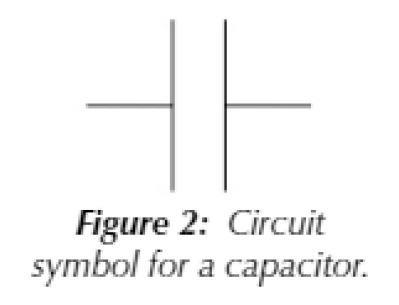Capacitors
Capacitors Equation
\[C=\frac{Q}{V}\]
Capacitance
- A capacitor is an electrical component that can store electrical charge.
- They are made up of two electrical conducting plates separated by an electrical insulator (e.g. a dielectric). The circuit symbol is two parallel lines

- When a capacitor is connected to a direct current (d.c.) power source, charge builds up on its plates — one plate becomes negatively charged and one becomes positively charged.
- The plates are separated by an electrical insulator, so no charge can move between them.
- This means that a potential difference builds up between the plates of the capacitor.
- The capacitance of a capacitor is the charge that the capacitor can store per unit potential difference across it.
- The voltage rating of a capacitor is the maximum potential difference that can be safely put across it.
- A capacitor will only charge up to the voltage of the power source it is connected to.
Uses of Capacitors
- Capacitors can only store relatively small amounts of charge, so they aren't used instead of batteries.
- To store the same energy as an AA battery, you'd need around 6000 farads. The capacitor would be absolutely massive.
- Capacitors are usually only used to provide power for a short amount of time it is tricky to prolong the discharge time and the voltage through the circuit decreases as the capacitor discharges.
- But capacitors are still very useful because they can store charge until it's needed, and then discharge all of their charge in a fraction of a second, whereas a battery might take several minutes.
- For this reason, charged capacitors can be very dangerous. Capacitors in electronics in your home could contain enough charge to kill you.
- One example of capacitor use is in a camera flash.